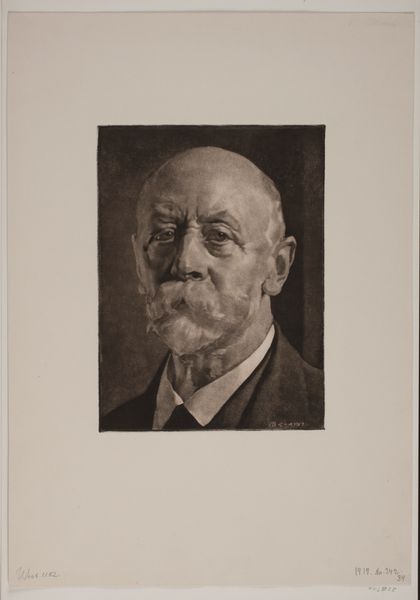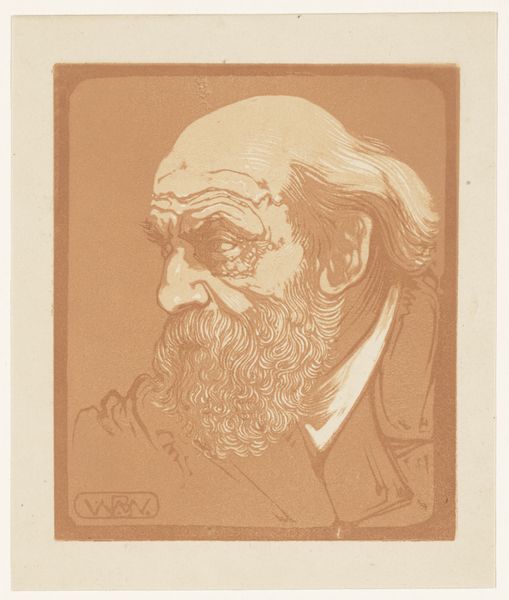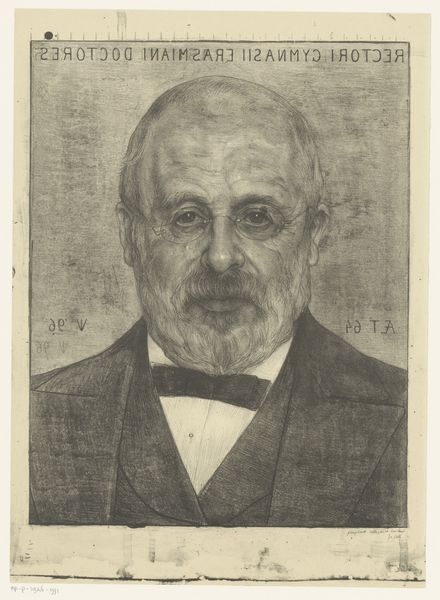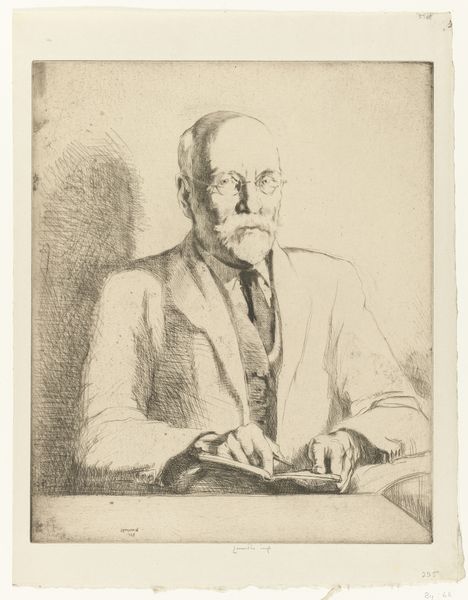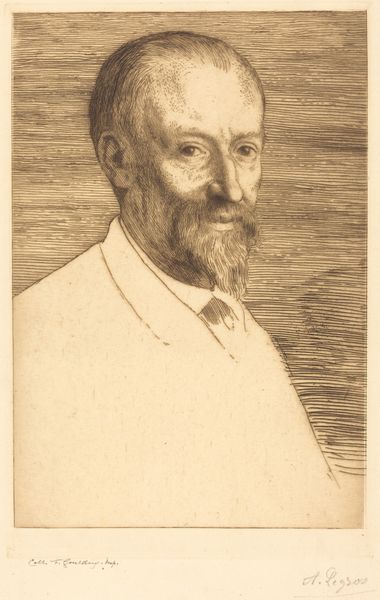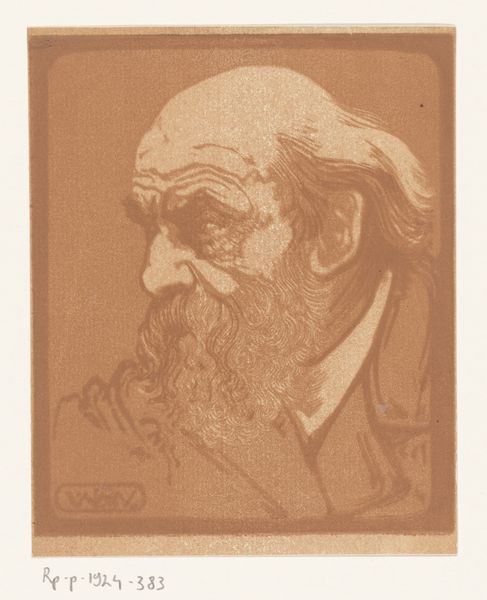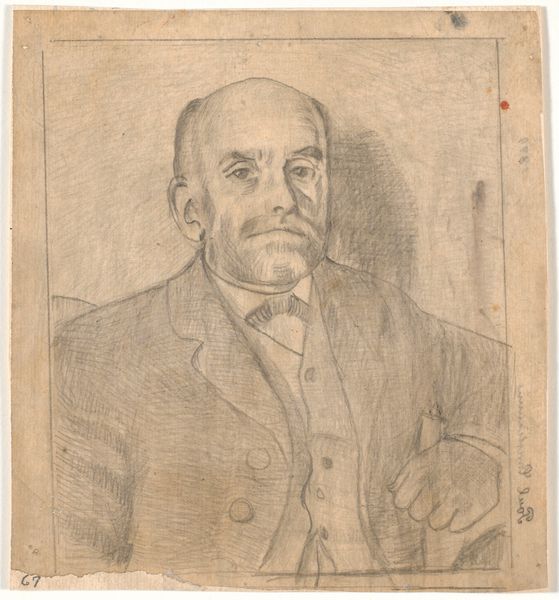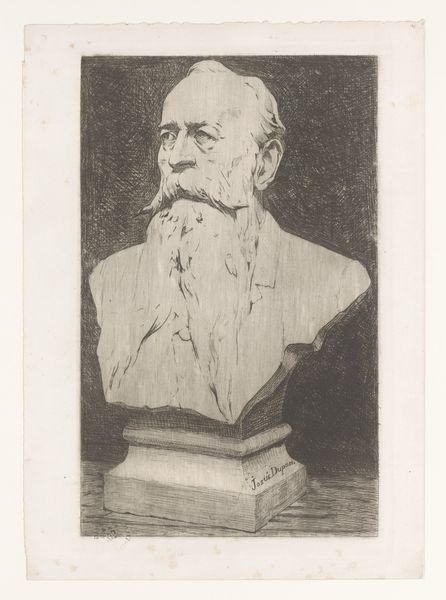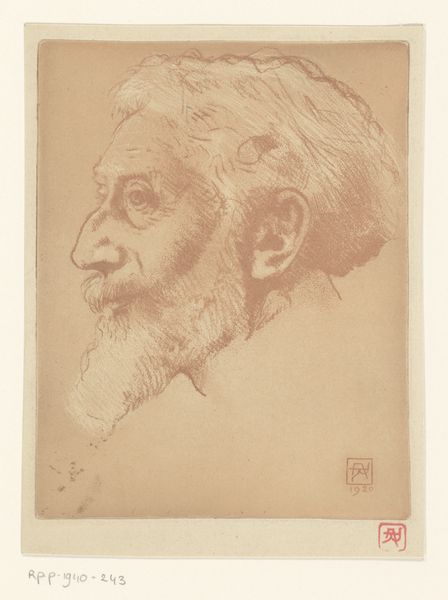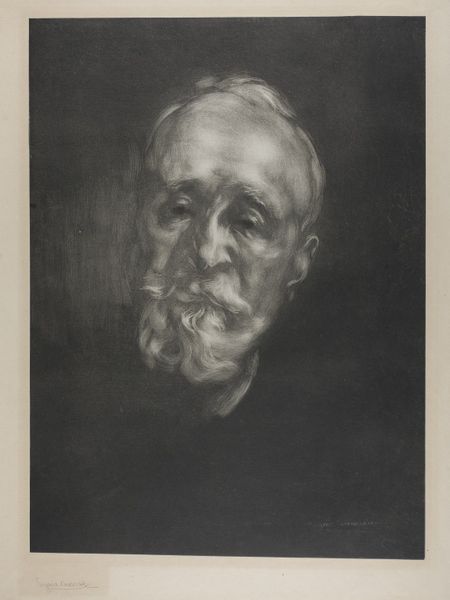
drawing, graphic-art, print
#
portrait
#
drawing
#
graphic-art
#
art-nouveau
# print
#
caricature
Dimensions: height 212 mm, width 160 mm
Copyright: Rijks Museum: Open Domain
Curator: Welcome. Here we have a compelling portrait by Bernard Willem Wierink, titled "Portret van M.W. van der Valk." It was created between 1917 and 1918 and utilizes drawing and printmaking techniques in the Art Nouveau style. Editor: The first thing that strikes me is the floral ornamentation surrounding the man’s head, it frames the subject so gracefully, though almost like prison bars due to the color scheme and hard outlines. There is this immediate feeling of introspection coming from the subject, but there’s a harshness in the contrasts. Curator: It’s a fascinating convergence of styles. The Art Nouveau influence is evident in the stylized floral border. It's also quite unique how it's not a romantic or overly decorative choice, which was becoming quite rare given the Great War raging at the time. This was an intentional choice on the artist's part, who took a step back from previous movements. Editor: Considering its historical context, that visual austerity makes a lot of sense. How do you think that plays into the subject's persona, the sitter, M.W. van der Valk himself? He has quite a stern demeanor. Curator: It presents van der Valk in a dignified manner. But I think this piece is more than just capturing a likeness. It's about positioning him within the social and intellectual landscape of the time, perhaps subtly challenging the idealized portraiture conventions through its direct, somewhat stark portrayal. This was during an active movement in the Netherlands which championed social realism over romantic idealism, even in commissioned portraits such as this. Editor: I'm intrigued by your point on its departure from idealized portraiture. I think the level of detail in his wrinkles and the shadows across his face further highlight a certain unromantic quality. He is undeniably present, confronting us. His eyes, gazing to the side, leave me to consider my own positioning when witnessing a man that is so steadfast. It leaves me unsettled and intrigued. Curator: I see that tension, certainly. But I think Wierink here captures an individual, while also reflecting the broader anxieties and shifts occurring within Dutch society at the close of the First World War. Editor: That resonates deeply with the themes that stand out upon viewing it. It makes me consider my relationship to historical power, what he saw, what he championed and even his potential involvement during such violent historical conflict. It speaks volumes even while seeming like a stoic presentation. Curator: Exactly. Editor: I'll leave considering the relationship between state, patron, and artist then.
Comments
No comments
Be the first to comment and join the conversation on the ultimate creative platform.
